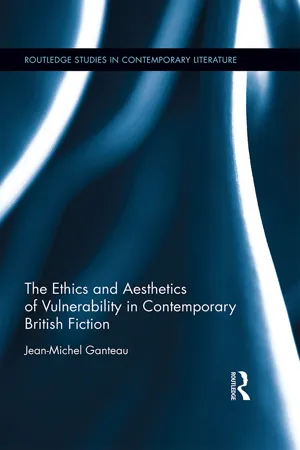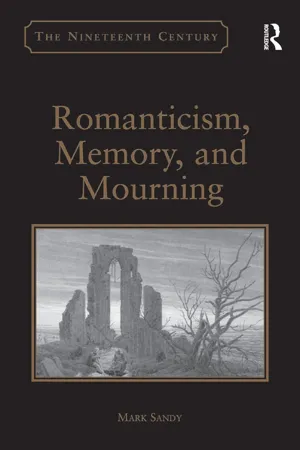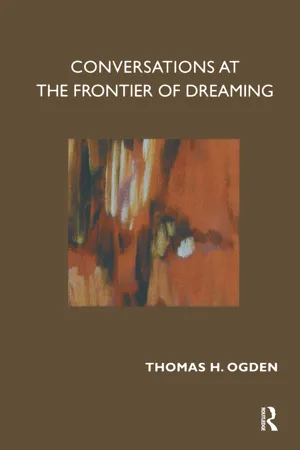Elegy
An elegy is a poem or song that expresses sorrow or lamentation, often for someone who has died. It typically reflects on the transience of life and the emotions of loss and grief. Elegies are characterized by their mournful and reflective tone, and they are a common form of expression in literature and music.
7 Key excerpts on "Elegy"
- Jean-Michel Ganteau(Author)
- 2015(Publication Date)
- Routledge(Publisher)
...With romance, separation may be remedied. With Elegy it is lamented. The elegiac subject, in his/her grief, and the elegiac text, in its paroxysmally affected form, are emblematic of the extreme frailty of human experience and aspirations in their unlimited probing at the limits of life. They help circumscribe the essentials of humanity as dependence on the lost other. My purpose here, as in the other chapters, is to pay attention to works of contemporary British fiction that I consider emblematic of the writing of vulnerability. This means that I am not going to concentrate, obviously, on poetry, even if I am aware that the privileged idiom of Elegy is the poetic form, and even if contemporary representatives, like Denise Riley, would provide a beautiful insight into the contemporary practice of the genre. “A Part Song,” a funeral Elegy lamenting the loss of her son, ends in the poignant prosopopeia of the departed youth in the closing stanza. 1 Her “Strangely unresponsive son,” remains silent and, precisely, unresponsive, despite the poet’s attempt to summon him from the world of the dead. He cannot be made to speak but through her own mouth, she who also “do the bereaved in different voices.” 2 Now, in her refusal to respect the conventions of traditional funeral Elegy, namely by eschewing some final apotheosis and transcendent vision—and through the reference to Eliot’s The Wasteland, that paradigm of modern Elegy (Ramazani 36)—, it seems to me that Riley captures the gist of contemporary Elegy, a mode without consolation or resolution, where what is voiced is the enduring, ghostly presence of the dead, encrypted in the survivor’s psyche and her voice (Kennedy 118). This brief excursus towards poetry may help introduce a reminder of the recent evolutions of the genre, even while stressing the affinities between Elegy as poem and as novel. The fact that the elegiac lends itself to various forms and treatments is widely documented. Christine M...
- eBook - ePub
- Katharina Volk(Author)
- 2011(Publication Date)
- Wiley-Blackwell(Publisher)
...As it happens, Elegy is a kind of “catch-all” genre in Greek literature that is difficult to tie down to a particular topic, mood, or stylistic level – quite unlike, for example, epic, the high-style genre, written solely in hexameters, that was typically associated with narratives of heroic exploits. In the Archaic and Classical periods (7th–4th C. BCE), elegies were performed, accompanied by the flute, at the drinking parties (symposia) of the aristocracy. Subjects included rousing calls to battle, bitter-sweet reflections on love, and moralizing about the proper conduct expected of an upper-class male. At the same time, the elegiac couplet was used for short inscriptions, especially on gravestones or offerings to the gods. Such funerary or votive texts were called epigrams (Greek epigramma means “inscription”), and “epigram” subsequently became the term for any short poem in elegiacs, no matter whether it was really inscribed somewhere, imitated the inscriptional format as a kind of literary game (e.g., by producing a eulogy of a deceased person that was never in fact put on a gravestone), or made no such pretense and treated other topics entirely. Epigram is thus, as it were, Elegy’s little sister, with the demarcation between the two not always entirely clear (there is no fixed number of couplets that an epigram must reach to be considered an Elegy). Both Elegy and epigram flourished in the Hellenistic period (3rd C. BCE onward). Elegies, including very long ones, were written on a wide variety of topics, with Callimachus’ Aetia (four books on the origins of obscure religious practices) one of the most famous examples. There was also a craze for epigram, which was now a purely literary genre that could be used to treat pretty much any subject...
...A final interesting convergence between Hymns and Elegy comes in a short exchange just before the urn is shattered: ‘Be careful with it.’ ‘Yeah. . . Don’t want to lose him twice, do we?’ (O’Connell 2005: 56). As we shall see, elegists have been concerned that the writing out of loss does not distance the deceased even further but turns loss into something of use for the survivors. Elegy, like Hymns, journeys to the limits of understanding and asks how it is possible to live with death. The origins and characteristics of Elegy are the subject of the remainder of this chapter. The past tense of the title ‘What was Elegy?’ serves two functions. It underlines that much of the chapter is concerned with literary history. Crucially, it speaks to the fact that Elegy’s conventions no longer seem as settled as they once did. Indeed, as W. David Shaw has observed, ‘the most authoritative critical histories’ of the genre ‘are encoded. . . in the Elegy’s own testing of conventions’; and good readers are as much involved in this testing as great elegists (Shaw 1994b: 1, 16). THE ORIGINS OF Elegy The origins of Elegy involve poetic form and subject matter. The word Elegy derives, dictionaries tell us, from the Greek elegos meaning ‘mournful song’ but the earliest surviving examples are not funereal. Elegies written in Greece in the seventh century BC by poets such as Archilochus, Callinus and Tyrtaeus dealt with war and love, offered philosophical advice or sent good wishes to travelling friends. These poems came to be known as elegies because they were written in elegiac couplets which alternate dactylic hexameters and pentameters. They were traditionally accompanied by the flute or the oboe-like, two-piped aulos. As Martin L.West observes, Elegy merely denotes a large body of verse in which the poet spoke in his own person, often to a specific addressee, and in the context of a particular event or state of affairs...
- James Doelman(Author)
- 2021(Publication Date)
- Manchester University Press(Publisher)
...Thus, consistent with the norms of the period, this study uses the term ‘funeral Elegy’ and, often, the shortened form ‘Elegy’. In his study of genre in the early modern period, Alastair Fowler points to Ludwig Wittgenstein’s analogy of ‘family resemblance’ to Renaissance genres. In this analogy, a genre is more like a family than a precisely defined and limited botanical class; thus, there is resemblance but not necessarily an always-appearing feature or features. 13 (Likewise, Franco Moretti’s ‘evolutionary’ approach is helpful in avoiding the idea of static, precisely defined generic categories: it acknowledges both synchronic and diachronic flexibility. 14) In the present case, the single connecting or continuing element would be that a ‘funeral Elegy’ is a poem on the death of a named historical individual; however, such would need to be distinguished from other death-related genres within the same family, such as the epitaph and anniversary poem. These differences can be determined by considering what Northrop Frye calls the ‘axis of presentation’: voice and moment. The funeral Elegy most typically involves a first-person voice responding emotionally to the recent death of an individual, at times through a direct addressing of the deceased. This immediacy in timing significantly distinguishes ‘funeral’ elegies from other poetic memorials of the dead. Epitaphs offer instead a tomb-based, stable and continuing commemoration – and generally use a third-person voice, sometimes of the tomb itself...
- Wolfgang Gortschacher, David Malcolm, Wolfgang Gortschacher, David Malcolm(Authors)
- 2020(Publication Date)
- Wiley-Blackwell(Publisher)
...16–19). To mourn the loss of a great writer is one of the motivating impulses that has shaped the tradition of the English Elegy from “Lycidas” onward. It helps to explain the persistence and prestige of the Elegy, and it takes us to the core of the genre, which has always been, to some extent, about the continuing vitality of the imagination in the face of darkness and about the need of the living to carry on. If the contemporary Elegy has sometimes appeared skeptical and anticonsolatory, it has also been remarkably resilient as a form, registering and responding to changing ideas of death and the afterlife in our own time. Very likely, poets will continue to be drawn to the Elegy, satisfying a hunger in themselves “to be more serious” and validating their own belief in poetry as a form of survival, “If only that so many dead lie round” (“Church Going.” Larkin 2012, 37, ll. 60–61). References Bunting, Basil (2000). Complete Poems. Newcastle: Bloodaxe. Burton, Richard (2013). A Strong Song Tows Us: The Life of Basil Bunting. Oxford: Infinite Ideas. Carson, Ciaran (2014). From Elsewhere. Oldcastle: Gallery Press. Clarke, Gillian (1997). Collected Poems. Manchester: Carcanet. Dunn, Douglas (1985). Elegies. London: Faber. Farley, Paul (1998). The Boy from the Chemist is Here to See You. London: Picador. Harrison, Tony (1987). Selected Poems. London: Penguin. Hart, Henry (1986). The Poetry of Geoffrey Hill. Carbondale: Southern Illinois University Press. Heaney, Seamus (1998). Opened Ground: Poems 1966–1996. London: Faber. Hill, Geoffrey (2006). Selected Poems. London: Penguin. Hughes, Ted (2003). Collected Poems. London: Faber. Larkin, Philip (2012). The Complete Poems (ed. Archie Burnett). London: Faber. Longley, Michael (2006). Collected Poems. London: Jonathan Cape. Mahon, Derek (1979). Poems 1962–1978. Oxford: Oxford University Press. Motion, Andrew (1978). The Pleasure Steamers. Manchester: Carcanet. Motion, Andrew (2009). The Cinder Path...
- eBook - ePub
- Mark Sandy(Author)
- 2016(Publication Date)
- Routledge(Publisher)
...These forms of Romantic meditations on grief often recognise the complexity and strength of feelings surrounding the consolation or disconsolation that the structures of poetic memory afford those who survive the deceased. My focus here is more on elegiac poetry and less on poetic elegies. Arranged broadly chronologically, subsequent chapters explore Romanticism's experimentation with poetic forms of grief, through its representation of mourning, loss, and death across a variety of genres (including the ballad, sonnet, epic, Elegy, fragment, romance, and ode), which in themselves constitute specific challenges to perceptions of poetic form, personal memory, public declaration and history. 15 _______________ 14 For a detailed account of those conventional and revisionary aspects of the Elegy as genre, see Peter M. Sacks, The English Elegy: Studies in the Genre from Spenser to Yeats (London; Baltimore: Johns Hopkins UP, 1985), p. xiii; pp. 1–37. Hereafter PME. 15 This study in spirit has an affinity with Stuart Curran's sense of form and genre in poetry of the period. See Curran, Poetic Form and British Romanticism (London; New York: Oxford UP, 1986), p. 13. David Duff suggests that ‘the Romantic Period … experienced not so much a dissolution of genres as a consolidation of and commodification of them’ (p. 6). See Duff, Romanticism and the Uses of Genre (Oxford: Oxford UP, 2009). II If Romantic writers are, as Shelley claims, ‘the mirrors of the gigantic shadows which futurity casts upon the present’, 16 then these grief-stricken instances of mourning – which often form the occasion for poetry – are as much regretful retrospection as they are, inextricably, bound up with the futures that they imaginatively project for the living and the dead. Romanticism's fascination with these imagined afterlives finds expression in its anxiety over an envisaged future audience and reception as well as its reflections on what it means to live posthumously and write for posterity...
- eBook - ePub
- Thomas Ogden(Author)
- 2018(Publication Date)
- Routledge(Publisher)
...7 An Elegy, a Love Song, and a Lullaby Prose states; poetry merely suggests. Poetry suggests because what it suggests cannot be stated. So it is to poetry that I turn, in this and several of the other chapters of this volume, in an effort to glean for myself and the reader a sense—and no more than a sense—of essences of important human experiences. The sense of an essence that we glean from a poem, if the poem is a good one, is not already there ("inside" the reader or "inside" the poem) waiting to be illuminated; it is newly created each time, not only in the medium of words, but just as important, in the medium of someone else's words. And that experience of being spoken by another person as one speaks him is a very large part of what is extraordinary and surprising and disturbing about poetry. We are known as we had not known ourselves because, up to that point, we had not been ourselves as fully as we are becoming in experiencing the poem and as the poem experiences us. Similarly in the analytic relationship, patient and analyst as individuals each read and are read by the unconscious of the other. As a result, when the analysis is going well each participant is being known as he has not known himself—because he has not been as fully himself before. In this volume, I have used the metaphor of conversations at the frontier of dreaming to convey—along with a great many other meanings—a sense of the way conscious and unconscious feelings give shape to language, and language gives shape to feelings. I will take up in this chapter one thread of those conversations, which concerns experiences of grieving as they are brought to life freshly, delicately, and unexpectedly in "Clearances" (1987), a poem Seamus Heaney wrote for his mother soon after her death...






